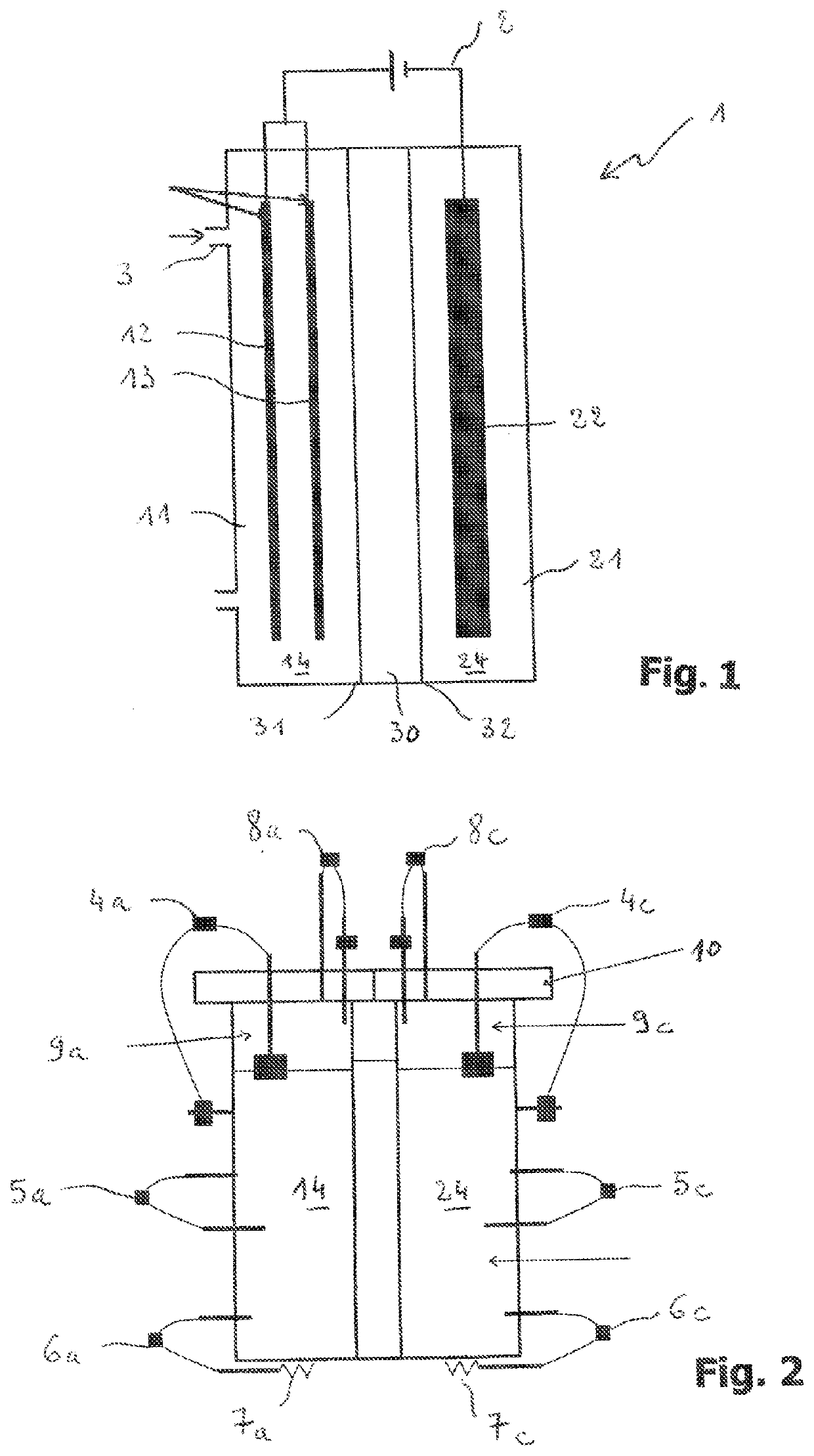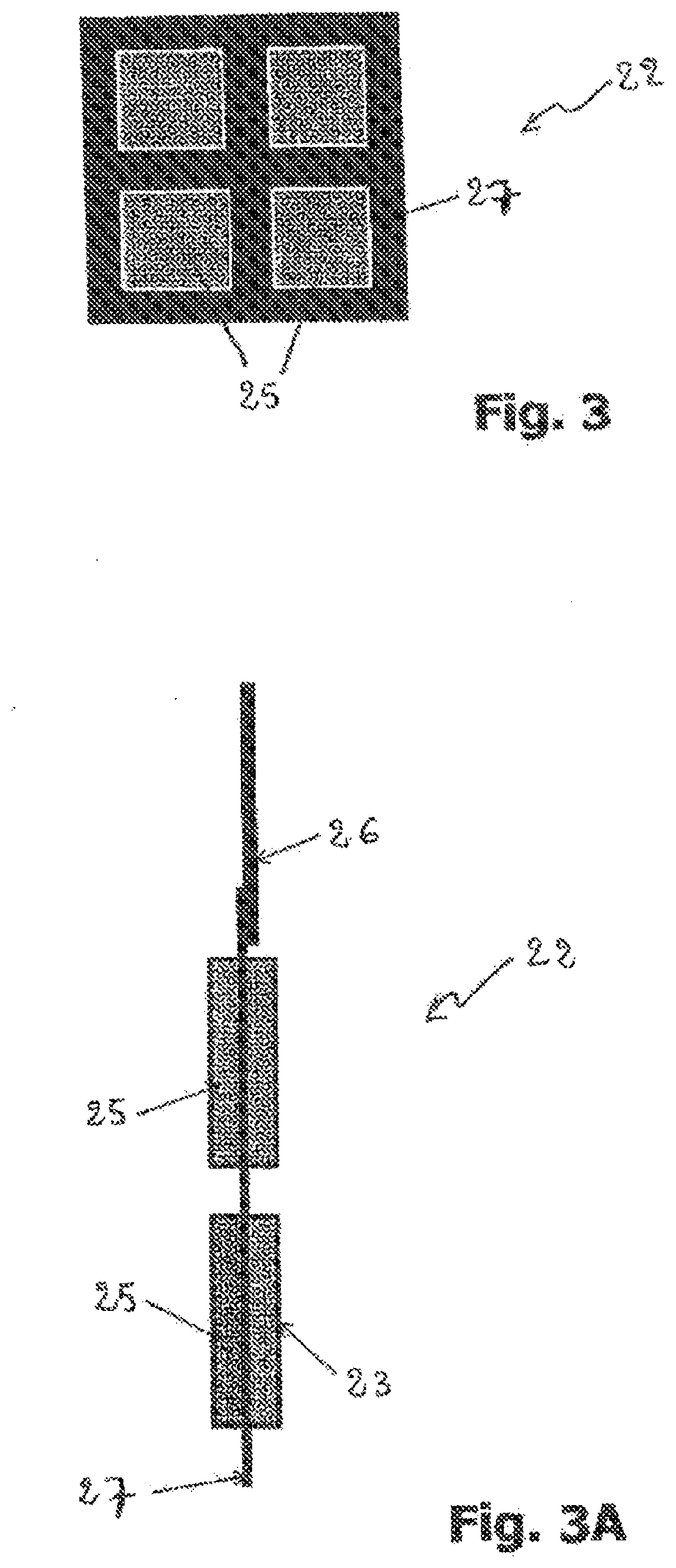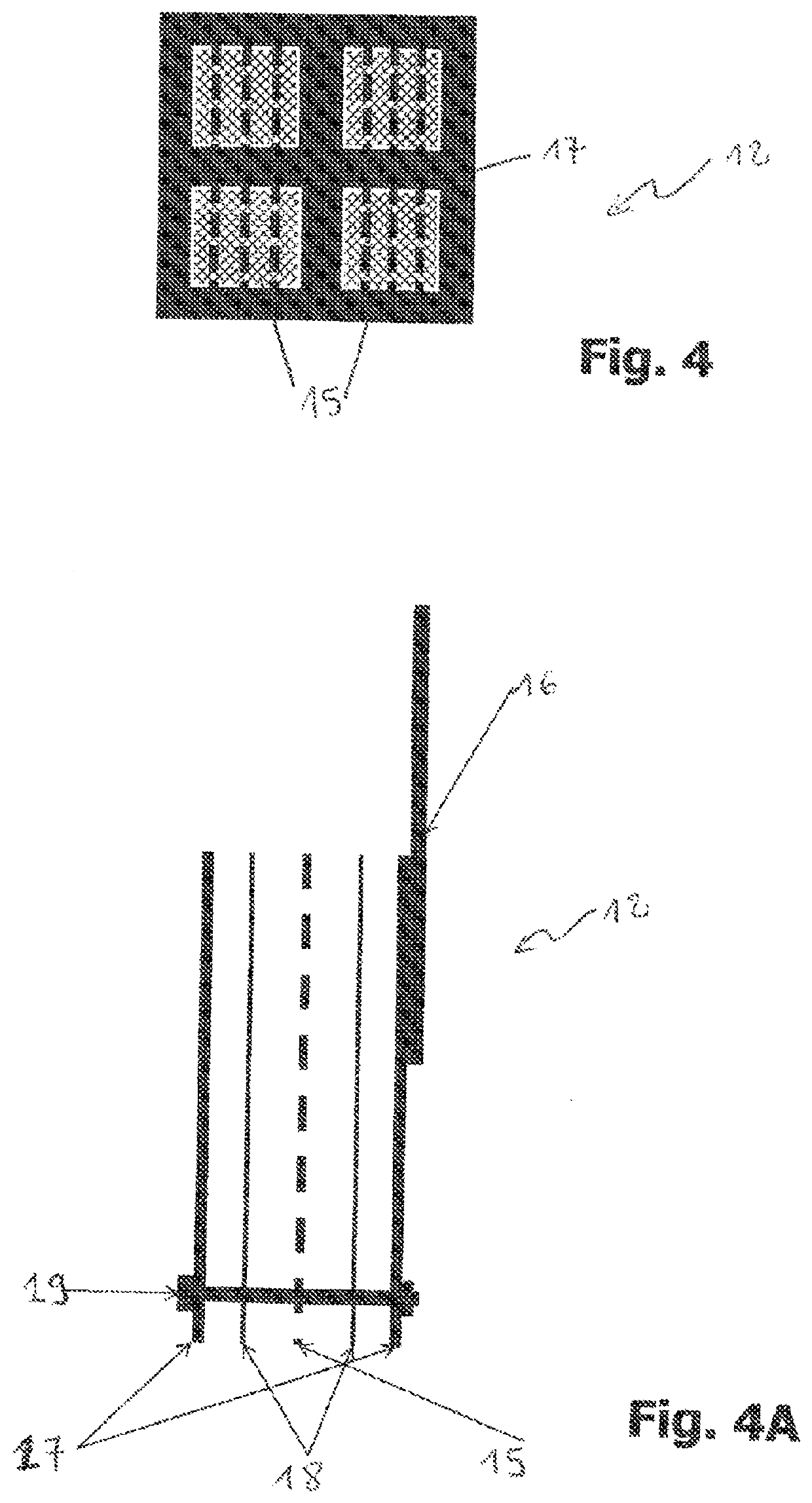Bioelectrochemical reactor with double bioanode, method for anofic regeneration and use of the reactor for microbial electrosynthesis
a bioanode and bioelectrochemical technology, applied in the field of bioelectrochemical, can solve the problems of large volume of the reactor, affecting the electrosynthesis effect of the reaction reaction, and unable to meet the requirements of the electrosynthesis reaction,
- Summary
- Abstract
- Description
- Claims
- Application Information
AI Technical Summary
Benefits of technology
Problems solved by technology
Method used
Image
Examples
example 1
[0067]The bioelectrochemical reactor 1 according to the invention, shown schematically in FIGS. 5 and 6, has been designed to replicate industrial conditions. This reactor comprises three compartments separated by two ion exchange membranes: an anode compartment 11 that contains two bioanodes 12 and 13 (which are electrically connected to the outside of the reactor). This compartment is separated by a cation exchange membrane 31 from an inter-membrane compartment 30 which is itself separated by an anion exchange membrane 32 from the cathode compartment 21 that contains the biocathode 22. The volumes of these three compartments are 5.25 L, 2 L and 5.25 L, respectively.
[0068]The size of each bioanode 12, 13 is 30×30 cm and it is less than 1 cm thick. The active areas of these two bioanodes is thus 0.36 m2, if the four faces of the two bioanodes are considered. The biocathode 22 comprises a volume of 1.2 L of carbon grains, which have an active area of approximately 3 m2, i.e. of the o...
example 2
ion of a Bioanode
[0079]The reactor, such as described in example 1, was put into operation for a period of 140 days. A potential difference of 0.9 V was applied between, on the one hand, the bioanodes that are electrically connected to each other (arranged in parallel) and, on the other hand, the biocathode.
[0080]In order to quantify the activity of a bioanode, the most commonly used method is to measure the maximum current density that it is capable of producing in the presence of an organic substrate. The current density at the bioanodes was thus tracked as a function of time (see the curve in FIG. 7 showing the current density as a solid line).
[0081]After approximately 18 days, a decrease in this current density was observed, a sign of aging of the bioanodes (range A-A in FIG. 7). One of its bioanodes was then regenerated (arrow R) according to the following method:
[0082]The frame 17 and the current collector 16 of one of the removable bioanodes were removed from the anode compar...
PUM
| Property | Measurement | Unit |
|---|---|---|
| chemical oxygen demand | aaaaa | aaaaa |
| chemical oxygen demand | aaaaa | aaaaa |
| chemical oxygen demand | aaaaa | aaaaa |
Abstract
Description
Claims
Application Information
 Login to View More
Login to View More - R&D
- Intellectual Property
- Life Sciences
- Materials
- Tech Scout
- Unparalleled Data Quality
- Higher Quality Content
- 60% Fewer Hallucinations
Browse by: Latest US Patents, China's latest patents, Technical Efficacy Thesaurus, Application Domain, Technology Topic, Popular Technical Reports.
© 2025 PatSnap. All rights reserved.Legal|Privacy policy|Modern Slavery Act Transparency Statement|Sitemap|About US| Contact US: help@patsnap.com



